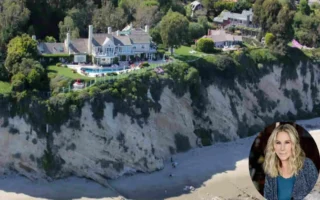Raynham Hall, also known as the Robert Townsend House, is a historical gem nestled in Oyster Bay, Long Island. This remarkable structure is not just an architectural masterpiece but also a witness to pivotal moments in American history. Its connection to Robert Townsend, a key figure in Revolutionary War espionage, makes it a symbol of patriotism and courage.
The Townsend Family Legacy
Prominence in Oyster Bay
The Townsend family quickly became one of Oyster Bay’s most influential families. Samuel Townsend was not only a successful merchant but also served as a Justice of the Peace and Town Clerk, roles that underscored his prominence in the local community. His leadership extended beyond business, as he played an essential part in shaping the civic and social fabric of Oyster Bay.
Life in the 18th Century
The Townsend household was bustling with activity. Samuel Townsend and his wife, Sarah, had eight children, each contributing to the family’s legacy in unique ways. The family’s Quaker faith also influenced their values and lifestyle, emphasizing simplicity, hard work, and integrity.
The Townsends’ status as a respected family set the stage for their involvement in one of America’s most critical historical moments—the Revolutionary War.
Robert Townsend: The Man Behind the House

A Patriot Spy with a Secret Mission
Robert Townsend, one of Samuel Townsend’s sons, is the figure who elevates Raynham Hall from a historical house to a national treasure. During the Revolutionary War, Robert became a patriot spy, working as part of the Culper Spy Ring, an intelligence network that provided crucial information to George Washington.
Under the alias “Samuel Culper Jr.,” Robert gathered intelligence about British troop movements and plans. His work was essential in outmaneuvering the British and securing American victories. Despite the danger he faced, Robert remained committed to the cause, embodying the courage and resourcefulness that define the Revolutionary spirit.
Impact on the Revolution
Robert Townsend’s espionage activities directly influenced the outcome of several battles during the Revolutionary War. His ability to secretly transmit information while maintaining his cover as a Loyalist sympathizer was nothing short of remarkable. Today, he is celebrated as one of the unsung heroes of America’s fight for independence.
Raynham Hall During the Revolutionary War
A House Divided
During the Revolutionary War, Raynham Hall took on a new role. After the Battle of Long Island in 1776, the house was occupied by Loyalist forces, specifically the Queen’s Rangers, a British military unit. This occupation disrupted the Townsend family’s life, subjecting them to hardships and forcing them to navigate the complexities of war on their doorstep.
A Strategic Location
The modern house’s location in Oyster Bay made it a valuable asset during the war. Its proximity to British-controlled areas allowed it to serve as a base for Loyalist activities. At the same time, it became a source of intelligence for Robert Townsend and the Culper Spy Ring, demonstrating the dual roles that Raynham Hall played in the conflict.
Architectural Evolution of the Robert Townsend House
From Colonial Farmhouse to Victorian Villa
In the mid-19th century, Raynham Hall underwent a dramatic transformation. Under the direction of Solomon Townsend II, the house was renovated to reflect the era’s Victorian tastes. This included the addition of a central tower, a water tower, and a new wing, along with intricate ornamental features.
The result was a striking contrast between the Quaker simplicity of the original colonial farmhouse and the Victorian grandeur of the renovated structure. This architectural evolution mirrors the broader cultural changes in America during the 19th century.
Feature Colonial Design Victorian Renovation
Roof Style : Simple, steep saltbox , Central tower and ornate gables
Materials : Local wood, practical design , Decorative woodwork, imported materials
Interior Layout Functional, plain , Elaborate, with added rooms
A New Identity: Raynham Hall
The house was renamed Raynham Hall, a nod to the Townshends of Norfolk, England. This new name added a sense of heritage and prestige, linking the house to a broader historical narrative.
Raynham Hall as a Historic Museum
Preservation Efforts
In the 20th century, Raynham Hall became a historic museum thanks to the efforts of Julia Weeks Cole and the Oyster Bay Daughters of the American Revolution. Their dedication ensured that the stunning house would be preserved for future generations, allowing visitors to step back in time and experience both its colonial and Victorian eras.
A Modern-Day Treasure
Today, Raynham Hall is more than just a museum; it’s a cultural and educational hub. Visitors can explore rooms restored to their colonial and Victorian appearances, view historic artifacts, and learn about the Townsend family’s impact on American history.
The Revolutionary Legacy of Robert Townsend House

A Symbol of Patriotism
Raynham Hall stands as a testament to the courage and sacrifice of individuals like Robert Townsend. The house’s connection to the Revolutionary War reminds us of the sacrifices made to secure American independence.
Keeping History Alive
By preserving Raynham Hall, we keep the stories of the past alive for future generations. The house serves as a valuable resource for understanding the complexities of the Revolutionary War and the role of ordinary citizens in shaping history.
Visiting Raynham Hall Today
How to Get There
Raynham Hall is located in Oyster Bay, Long Island, making it easily accessible for history enthusiasts and tourists. Whether you’re a resident or visiting from afar, the luxury house is a must-see destination.
What to Expect
Visitors can enjoy guided tours, educational programs, and special events that bring the history of Raynham Hall to life. From the colonial-era kitchen to the Victorian parlor, every room tells a story.
Where Does Robert Townsend Currently Live?
Robert Townsend currently lives in Southern California. This is confirmed by his recent interviews mentioning his home base in Southern California, where he was preparing for live theater performances before traveling for shows.




